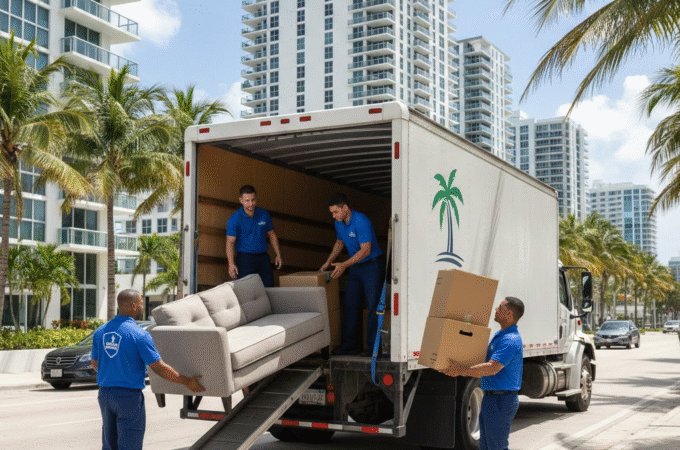
Do You Want to Borrow on Mortgage for Home Improvement? Read This Post
Most investors refinance for various reasons such as switching mortgage companies, optimizing lower interest rates, and reducing monthly loan payments, among others. Someone may see a chance to utilize it for buying a car or improving their home. Refinancing doesn’t imply paying two mortgages. Instead, it helps pay off the first loan, then you embark on the second.
Homeowners should understand that deciding to refinance a mortgage should mainly rely on your financial health. Today’s mortgage rates shouldn’t put you in a dilemma of whether to refinance or not. For a long time, Loan Advisor has been providing useful articles about home refinancing. Here are considerations to look at before opting for a refinance to improve your home. Let’s continue reading to get more.
How much loan do you want and why?
Whenever you wish to apply for an extra amount of money on top of the borrowed, a lender will start by asking the amount and reasons for borrowing. People borrow an additional amount for;
- Property purchase
- Home renovation
- Divorce settlement
- Debt consolidation
- School fees
- Car purchase
A borrower asking for an extra $15,000 and above faces more examination and assessment as compared to others in need or less. However, all rely on the creditor’s affordability assessment. Lenders became strict in affordability checking after the 2014 Mortgage Market Review. It made situations harder for borrowers.
While you may not require additional borrowing, it’s challenging to get a mortgage approval even if you already paid the first. They always want certainty that you’ll pay off the mortgage before agreeing to lend it to you. That means not only will your income be checked but also spending habits and bank statements. More assessment is the risk involved in your borrowing requirements.

A lender might consider borrowing for home improvement a lower risk taken. This is because a home improvement action would mostly increase its value, and that means it’s an investment that will payback. On the contrary, it won’t convince them to borrow more money to buy a new car or take a vacation abroad. Saying that doesn’t suggest that you’ll be denied.
To be on the safe side, it’s best if you maintain a single lender. Having one lender build your relationship and makes it easy to accept most applications without struggles. This is with a strong assumption that they’d have a better understanding of your financial situation, meaning one can tell your borrowing reliability.
Other factors for increasing your application acceptance
Credit score- Recently, most have come up with tightened standards for approving loans. It surprises some clients to realize that they can’t qualify to get lower rates despite having good credit scores. Usually, a credit score starting from 760 is a qualification for the lowest mortgage rates. Even borrowers having a lower credit score can also be approved for another loan, only that they’ll have to pay more interest rates.
Debt to income ratio- Having a mortgage loan already shouldn’t blind you into thinking getting a new loan is easy. It’s because despite lenders being strict on checking your credit score, they also consider the debt-to-income ratio. Clearly, factors including having a stable job, high income, substantial savings, or a long-serving job history can increase chances for getting loan approval. But lenders normally want one to have monthly expenses at a maximum of 28% of the total income in one month. They expect a payment to debt ratio of less than 36%. However, with other extra factors, some would want it at 43%. You can choose to repay some loan before thinking about refinancing to upgrade your qualifications.
Home equity- Home equity is the number one factor to qualify for a mortgage refinance. As reported by the Federal Reserve Bank, home values were higher towards the 2020 first quarter-end. The prices started declining during the second quarter because of the COVID-19 economic recession. Again, Core Logic reported an increase in equity to mortgage homeowners in 2019 first quarter of 2019. The increase was $590 billion, which equates to 6.5% yearly. Up to now, some homeowners have low equity, and others haven’t regained their values yet. It’s challenging to refinance with low or no equity, especially when dealing with conventional lenders. But don’t worry because various government programs are out there to help. Your task is mainly researching to identify a program you qualify by discussing your personal needs with a lender. In case your equity is 20% or more, you find it easier to be eligible for another mortgage.
Refinance points- While mortgage interest rates matter when comparing loan offers, don’t forget to confirm the points. To illustrate, points similar to one percent of a loan, are paid back to reduce the interest fees. Make sure you work out the maths to understand the amount you’ll pay with every penny borrowed as it’ll be transferred into your new loan’s principal.

The break-even point
Do you know how to calculate your break-even point? The time to benefit from the new repayment is the break-even point. Use the following calculations to get your break-even point;
- Get your monthly savings by taking the current monthly payment minus the new refinanced monthly mortgage.
- Determine your tax after rate by subtracting your tax rate from one.
- Find your tax after savings by multiplying the tax after rate by monthly savings.
- Find out the total closing cost and fees and divide the sum by your monthly after-tax savings to find how long it’ll take to recover the mortgage’s refinancing costs.
For example;
Suppose you have a 20-year fixed-rate mortgage with a refinancing worth $300,000 at six percent interest and four percent new interest, a home refinance decreases your original mortgage payment from $2,148 to $1,817. Here, you’d have saved $331. In case your tax rate is 22%, then the after-tax rate stands at 0.78, resulting in after-tax savings worth$258. Such a scenario can be considered to refinance a mortgage.
The bottom line
Maybe you’re looking to borrow more cash for improving your home or doing other projects, please use this blog to understand if your decision is worth or not. Borrowing more means that you remortgage to apply for more cash, consequently raising your mortgage size. Please shop around and consult more to find out if it’s the best choice for you at that time.




